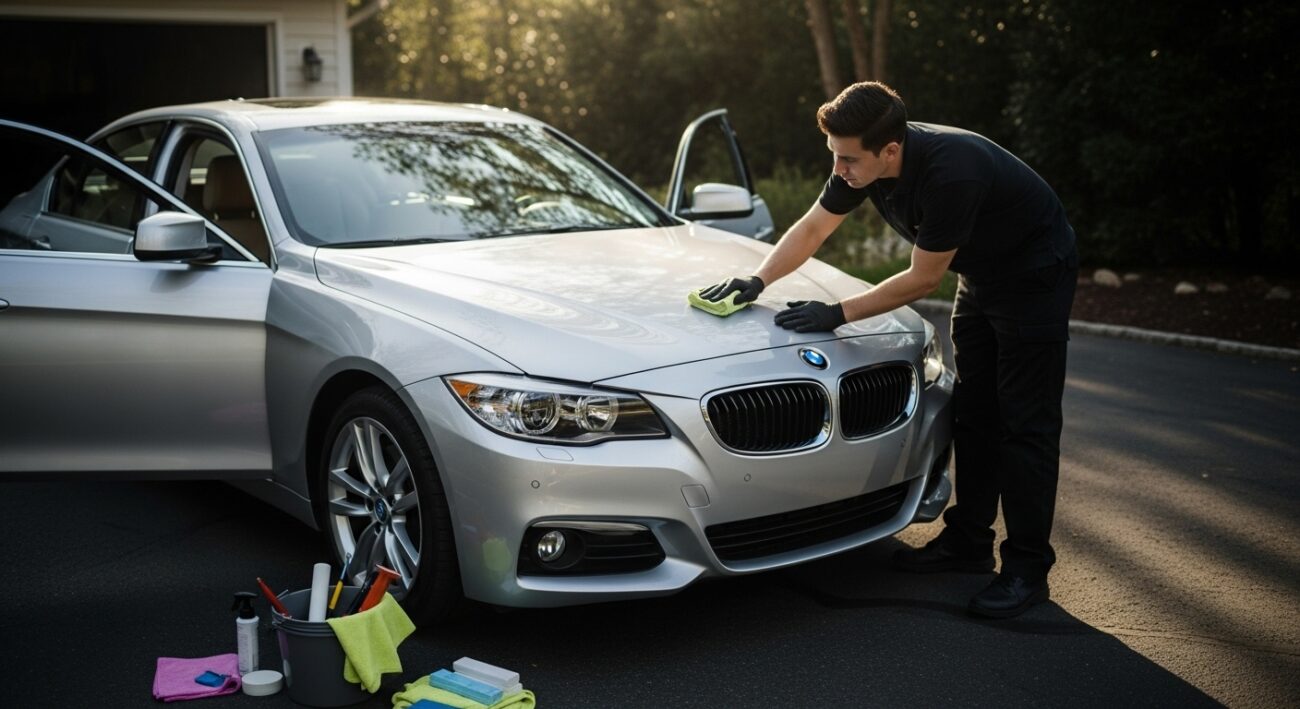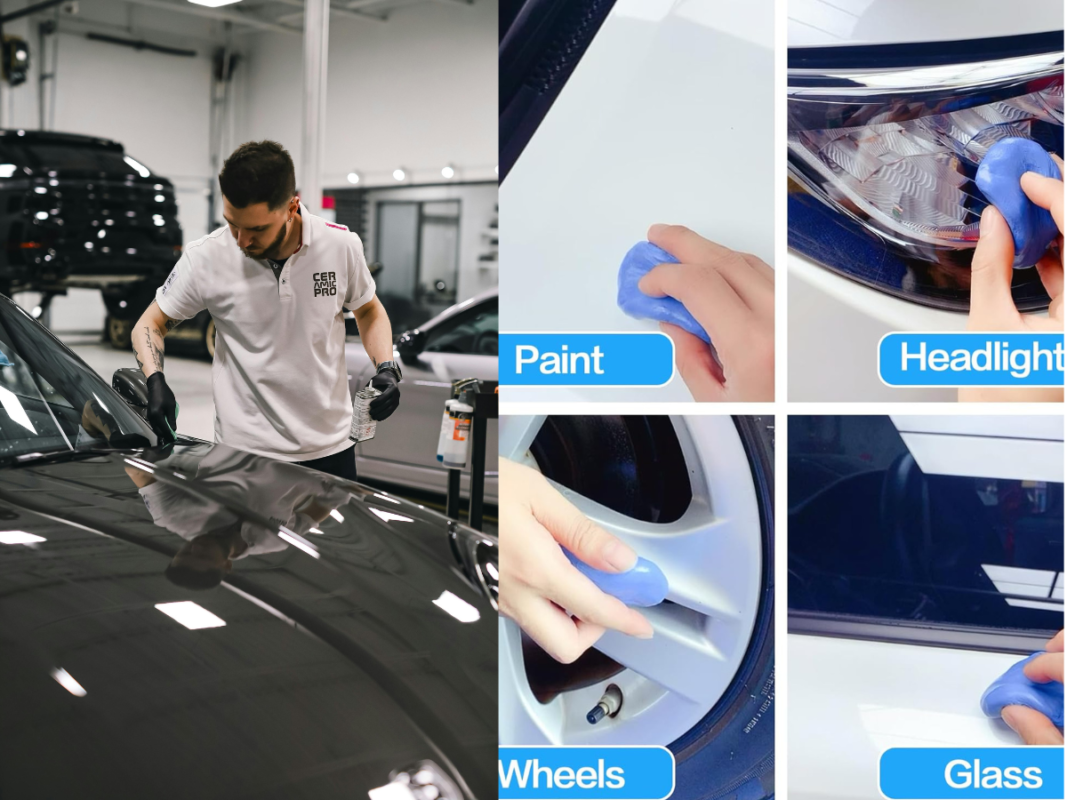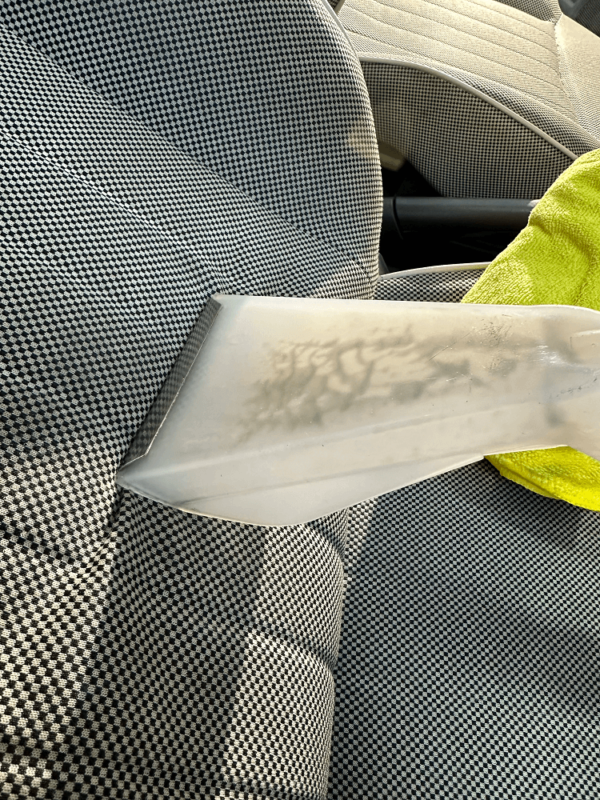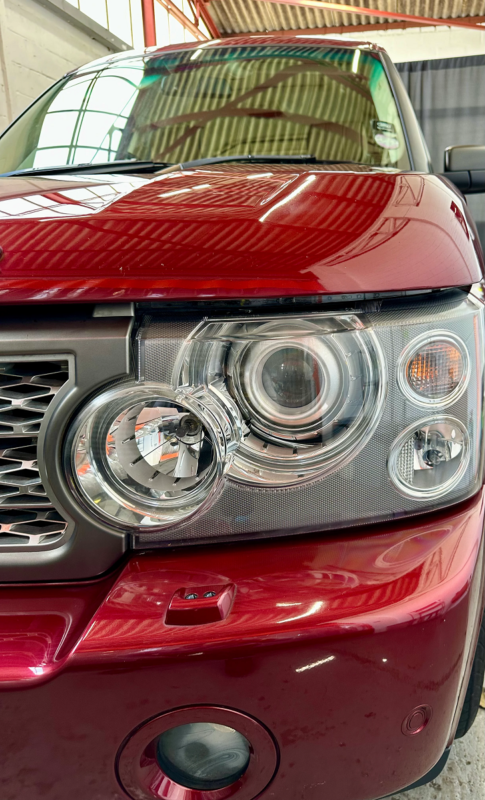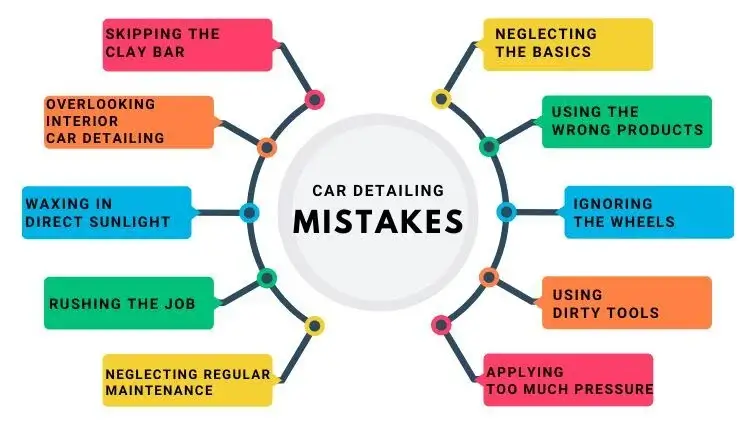Everything You Need To Know About Car Detailing.
Car detailing is a comprehensive process aimed at making a vehicle look as close to brand new as possible, both inside and out. Unlike regular car washing, detailing involves meticulous handwashing and the use of specialised tools and products to clean, enhance, and protect various surfaces of the car. Whether you’re a first-time detailer or an experienced one, understanding the intricacies of car detailing can help you maintain your vehicle’s appearance and value over time.
Understanding Car Detailing

Definition and Scope
Car detailing is the art and craft of cleaning and restoring a vehicle to like-new condition. It involves a range of cleaning and restoration techniques to restore the car to its original condition. Detailing goes beyond just the normal car wash to make a car look spotlessly clean from inside and outside. Car detailing is divided into two components: Interior Detailing and Exterior Detailing.
Difference Between Washing and Detailing
A car wash is normally an automated system that a car passes through to clean the exterior. In contrast, professional car detailing is always done by hand and includes both exterior and interior car detailing services. While a car wash might take a few minutes, detailing usually takes a lot of time and involves detailed touch-ups to repair the car’s paintwork and its overall look.
Benefits of Car Detailing
- Enhanced Appearance: Detailing makes a vehicle look as close to “brand new” as possible and even in some cases, “better than new”.
- Protection: Car detailing is just as much about protection as it is about shiny surfaces and dust-free interiors.
- Value Retention: Regular detailing helps in maintaining the car’s value over time.
Detailing involves a range of cleaning and restoration techniques to restore the car to its original condition.
Essential Tools and Supplies
To achieve a professional-level finish in car detailing, having the right tools and supplies is essential. Quality control detailing requires a comprehensive set of items to ensure every part of the car is meticulously cleaned and maintained.

Step-by-Step Car Detailing Process
Pre-Detailing Preparation
Before you start detailing, gather all necessary tools and supplies. This includes cleaning agents, microfiber cloths, brushes, and specialised products. Proper preparation ensures a smooth detailing process and helps avoid any interruptions.
Interior Detailing Steps
- Vacuuming: Start by vacuuming the seats, carpets, and all other interior surfaces to remove loose dirt and debris.
- Cleaning Surfaces: Use appropriate cleaners for different surfaces like leather, plastic, and vinyl. Wipe down the dashboard, console, and door panels.
- Glass Cleaning: Clean the interior windows with a glass cleaner to ensure a streak-free finish.
- Conditioning: Apply conditioners to leather seats and other applicable surfaces to keep them supple and protected.
- Final Touches: Inspect the interior for any missed spots and touch them up as needed.
Exterior Detailing Steps
- Washing and Drying: Unlike a car wash, detailing is done by hand. Spray the car with a high-powered spray, followed by thorough hand washing on the rims, door jambs, glass, and all exterior parts that need cleaning.
- Claying: Use a clay bar to remove impurities, overspray, and other residues that cannot be removed with normal detergents.
- Polishing: Polish the car to remove minor scratches and enhance the paint’s shine.
- Waxing: Apply a coat of wax to protect the paint and give it a glossy finish.
- Detailing the Trim: Clean and protect the exterior trim, including plastic and rubber parts.
- Final Inspection: Conduct a final inspection to ensure every part of the car is spotless and protected.
Detailing a car isn’t a particularly difficult task, but following the right procedures and using the correct products is crucial to avoid causing harm.

Common Mistakes to Avoid
Using Incorrect Products
One of the most common mistakes in car detailing is using the wrong cleaning fabric or the same fabric for every surface. Using incorrect products can cause damage to your car’s paint, interior, and other surfaces. Always ensure you are using the right product for each specific area of your vehicle.
Skipping Steps
Detailing is a meticulous process, and skipping steps can lead to subpar results. For instance, using the same bucket for soap and rinsing can cause cross-contamination, leading to paint swirls and other issues. Always follow a structured process to ensure the best results.
Neglecting Regular Maintenance
Regular maintenance is crucial for keeping your car in top condition. Neglecting routine cleaning and protective measures can lead to long-term damage. It’s essential to maintain a consistent detailing schedule to preserve your vehicle’s appearance and value.
Working too fast without taking the time necessary to complete the task properly is a common mistake. Slow and methodical work is essential to achieve optimal results with any detailed procedure.
Professional vs. DIY Car Detailing

Pros and Cons of Professional Detailing
Professional car detailing offers several advantages, including quality control detailing that elevates cars into works of art. Skilled professionals provide attention to detail, personalised service, and quality assurance. However, professional detailing can be expensive and may require scheduling in advance.
Pros:
- Skilled professionals
- Attention to detail
- Personalised service
- Quality assurance
- Eco-friendly practices
Cons:
- Higher cost
- Need for scheduling
Pros and Cons of DIY Detailing
DIY car detailing can be a cost-effective alternative, allowing car owners to maintain their vehicles at their convenience. It also provides a sense of accomplishment. However, it requires time, effort, and the right tools and products.
Pros:
- Cost-effective
- Convenient
- Sense of accomplishment
Cons:
- Time-consuming
- Requires effort
- Need for proper tools and products
Cost Comparison
| Aspect | Professional Detailing | DIY Detailing |
| Cost | Higher | Lower |
| Time and Effort | Minimal for owner | Significant |
| Quality Control | High | Variable |
| Convenience | High | Depends on owner |
Choosing between professional and DIY car detailing depends on your specific needs and preferences. Consider factors like cost, time, and the level of detail you desire for your vehicle.
Maintaining Your Car Between Details

Routine Cleaning Tips
To keep your car looking its best between professional detailing sessions, establish a regular cleaning routine. This includes vacuuming the interior, wiping down surfaces, and washing the exterior. Regular cleaning prevents dirt and grime from building up, making each subsequent detailing easier and more effective.
#1. Protective Measures
Implementing protective measures can significantly prolong the cleanliness and condition of your car. Use seat covers and floor mats to protect the upholstery and carpets. Applying a quality wax or sealant to the exterior can shield the paint from environmental damage. Additionally, parking in a garage or shaded area can prevent UV damage and keep your car looking newer for longer.
#2. When to Schedule Your Next Detail
It’s generally recommended to schedule a professional detailing session every four to six months. However, the frequency can vary based on your driving habits and environmental conditions. Regular detailing ensures that your car remains in top condition, both inside and out. If you go too long without detailing, dirt and residues will accumulate, making it more challenging and costly to clean.
Consistent maintenance and preventive measures are crucial to preserving the cleanliness and appearance of your car’s interior. By following these tips, you can enjoy a clean and comfortable driving environment for years to come.
Maintaining your car between details is essential to keep it looking its best. Regular washing, using the right products, and protecting the paint can make a significant difference. For expert advice and top-notch detailing services, visit our website today!

Conclusion
Car detailing is an essential practice for maintaining the aesthetic and functional value of your vehicle. It goes beyond a simple car wash by providing comprehensive cleaning, enhancement, and protection for both the interior and exterior of your car. Whether you are a novice or an experienced detailer, understanding the intricacies of car detailing can help you achieve a spotless, well-preserved vehicle. From gathering the right tools and supplies to following the correct procedures, every step is crucial in ensuring your car looks and feels its best. We hope this guide has provided you with valuable insights and practical tips to elevate your car detailing game. Happy detailing!
Bullet Point Summary
- Car detailing goes beyond regular car washing by offering a thorough cleaning, enhancement, and protection of both the interior and exterior surfaces.
- Essential tools and supplies for car detailing include specialised products for both the interior and exterior, such as microfiber towels, vacuum cleaners, and various cleaners and conditioners.
- A step-by-step car detailing process involves pre-detailing preparation, detailed cleaning of the interior, and meticulous washing and protection of the exterior.
- Common mistakes to avoid in car detailing include using incorrect products, skipping steps, and neglecting regular maintenance.
- Understanding the pros and cons of professional versus DIY car detailing can help you decide the best approach for maintaining your vehicle.
Frequently Asked Questions
What is car detailing?
Car detailing is the process of making a vehicle look as close to ‘brand new’ as possible, both inside and out. It involves thorough cleaning, minor defect correction, and protective measures.
How is car detailing different from car washing?
Car washing typically involves an automated system to clean the exterior of the car, while car detailing is a more comprehensive process that includes handwashing by experienced detailers and focuses on both the interior and exterior of the vehicle.
What are the benefits of car detailing?
Car detailing helps protect your interior finishes and exterior paint, removes smells and stains, and retains the resale value of your car. It also makes your vehicle look its best.
What tools and supplies are essential for car detailing?
Essential tools and supplies for car detailing include a vacuum cleaner with attachments, microfiber towels, soft-bristle brushes, all-purpose cleaner, upholstery cleaner, leather cleaner and conditioner, glass cleaner, interior protectant, and an air compressor or canned air for hard-to-reach areas.
Can I detail my car myself, or should I hire a professional?
Both options have their pros and cons. DIY detailing can save money and be satisfying, but it requires time, effort, and the right tools. Professional detailing ensures high-quality results but can be more costly.
How often should I get my car detailed?
It’s recommended to detail your car every 4-6 months to keep it in optimal condition. However, the frequency can vary based on your driving habits, environmental factors, and personal preferences.


